Your front door is the first thing people see when they enter your home. That’s why it’s important to make it look both welcoming and eye-catching. A fresh coat of paint on the front door is a simple, transformative way to enhance your entryway and is guaranteed to impress your guests! Using premium Monarch products when DIY door painting, will leave you feeling satisfied when you get the job done right the first time.
For this front door project, we will be using the Monarch’s Doors, Trims & Cupboards Kit as our hero product. The roller in the kit has a 4mm nap which is perfect for high sheen surfaces and will allow you to achieve an ultra-smooth finish with no stipple.
Step 1: Protect your space & prepare your paint tools
Lay out your drop sheet under the door to protect any carpet or hardwood floors.
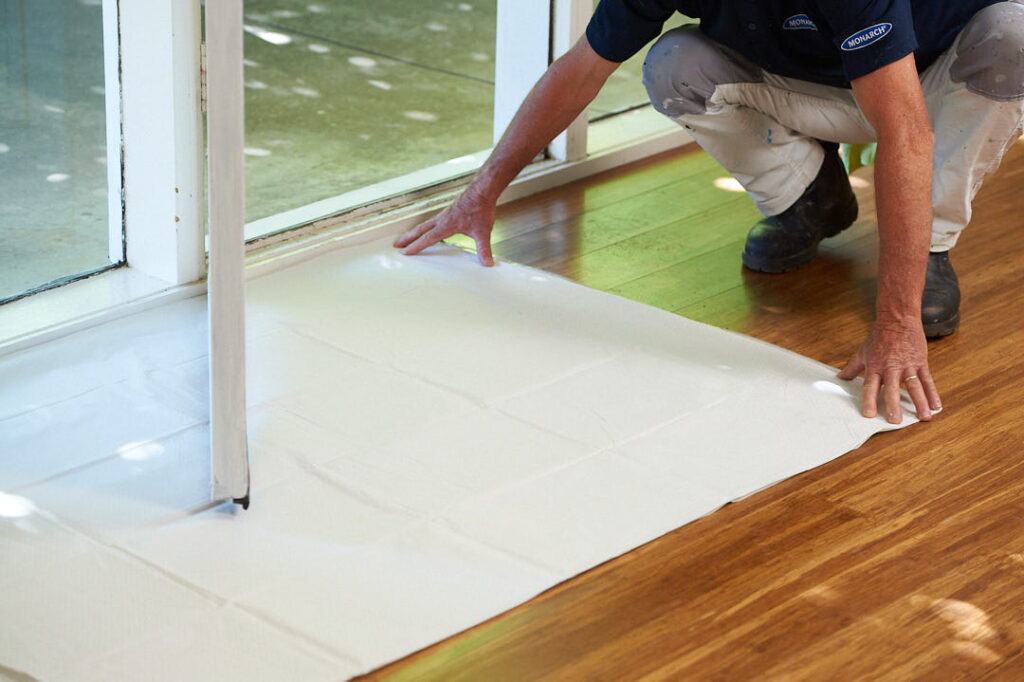
Soak your brush in an inch of water for 10-15 minutes, then remove and spin the brush out to remove any excess water.
Don’t forget to wash your roller! Any new roller needs to be cleaned prior to use. This prevents pieces of lint from getting in your paint. Spin out your roller on a wall to get rid of any excess water.
Make sure you put drop sheet under the door to protect your floor. If your door is dirty, start by washing off all stains and dirt marks. Then sand all over to remove the current paint lacquer from the door. This will ensure the new paint adheres properly to the door. Once your surface is smoothed out, wipe it down to remove all traces of dust. Now you’re ready to paint!
Tip: Don’t forget to wash your roller! Any new roller needs to be cleaned prior to use. This prevents pieces of lint from getting in your paint. Spin out your roller on a wall to get rid of any excess water.
Step 2: Prepare the surface of your door
If your door is dirty, start by washing off all stains and marks.
Fill in any cracks or imperfections with Monarch Mini Fill Sand Go. Depending on the quality of the door, use quality sandpaper or an electric sander over the entire surface.
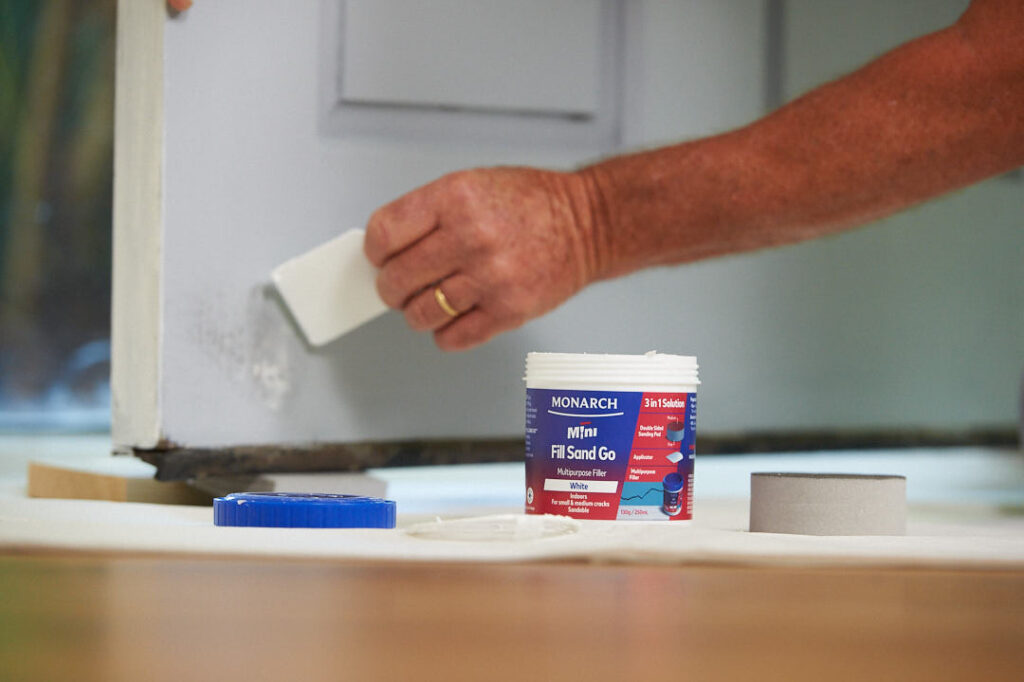
Tipping off is achieved when you use a quality brush with minimal paint and make even strokes up and down the whole length of the door to ‘tip off’ for a stipple-free finish.
Don’t forget to paint the door edges. Starting with your door open, paint along all the edges and cut in along one side. Use your brush for this step, and remember to use long, steady strokes as much as possible.
Step 3: Apply undercoat
Unless your door is brand new, it is important to prime your door with an undercoat. Once applied, give the surface another sand to remove any imperfections.
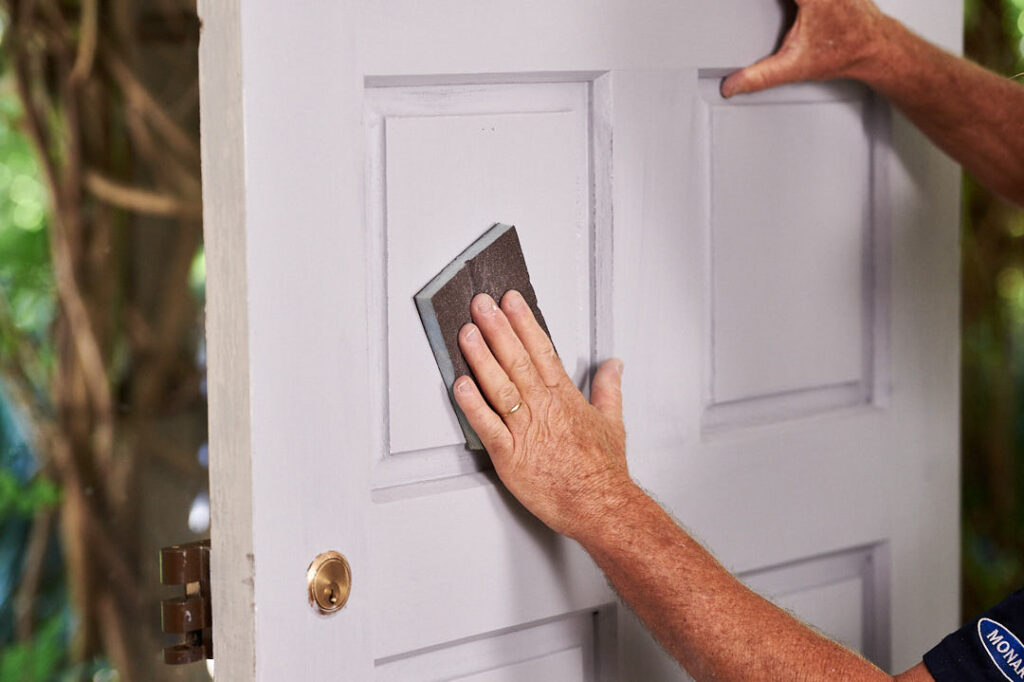
Step 4: Remove door fixtures
Before you start painting, remove any door handles and fittings. Tape over your hinges to protect them from any paint splatter.
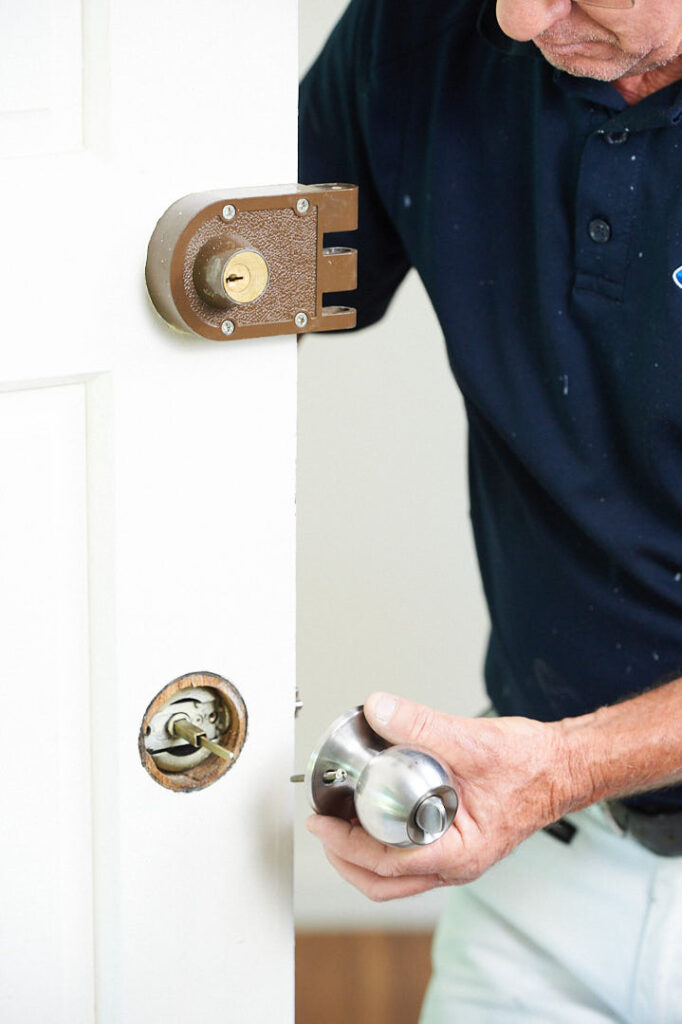
Step 5: Apply first coat
Using your chosen colour, load the brush with paint from your bucket. Load it an inch up the filament to avoid having too much paint on the brush. If you’ve got too much paint on your brush, some may seep under the masking tape ruining your nice clean edge.
Hold your Walls Doors & Trim Brush on a 45-degree angle for ultimate control and precision. For a panelled door, the first section you want to paint is the bevel or the internal part of your moulding.
Don’t forget to paint the door edges. Starting with your door open, paint along all the edges and cut in along one side.
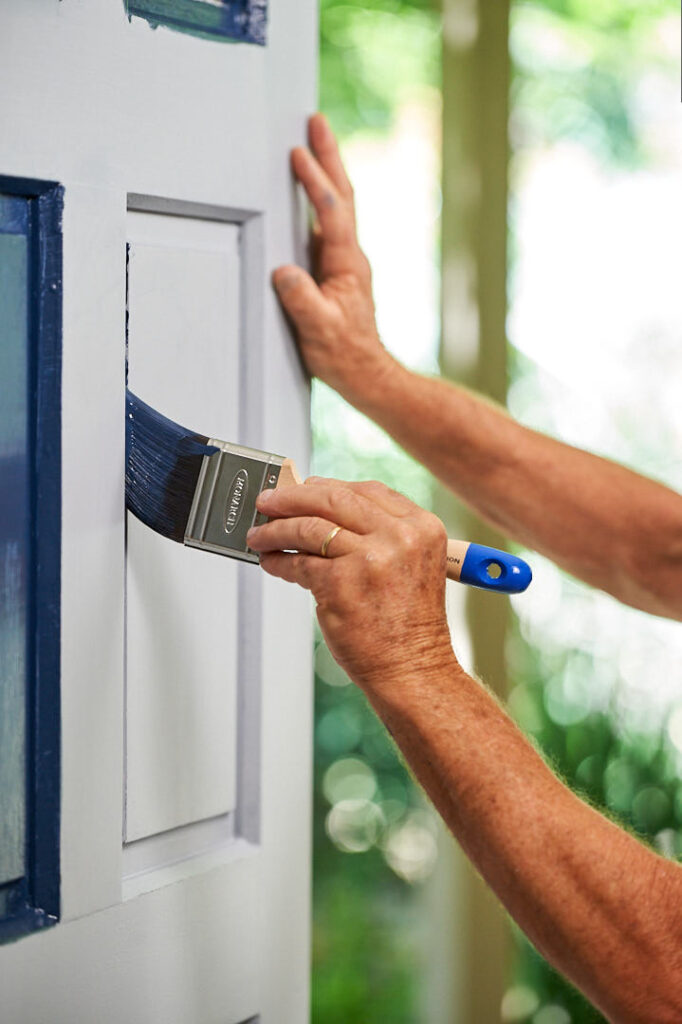
Step 6: Roll the larger door panels
Now you are ready to start painting the panels! Using the Doors, Trims & Cupboards Kit, load the entire roller cover nap with paint. Start with the internal panels, then move onto the vertical panels and finish with the horizontal panels, always going along the grain of the wood.
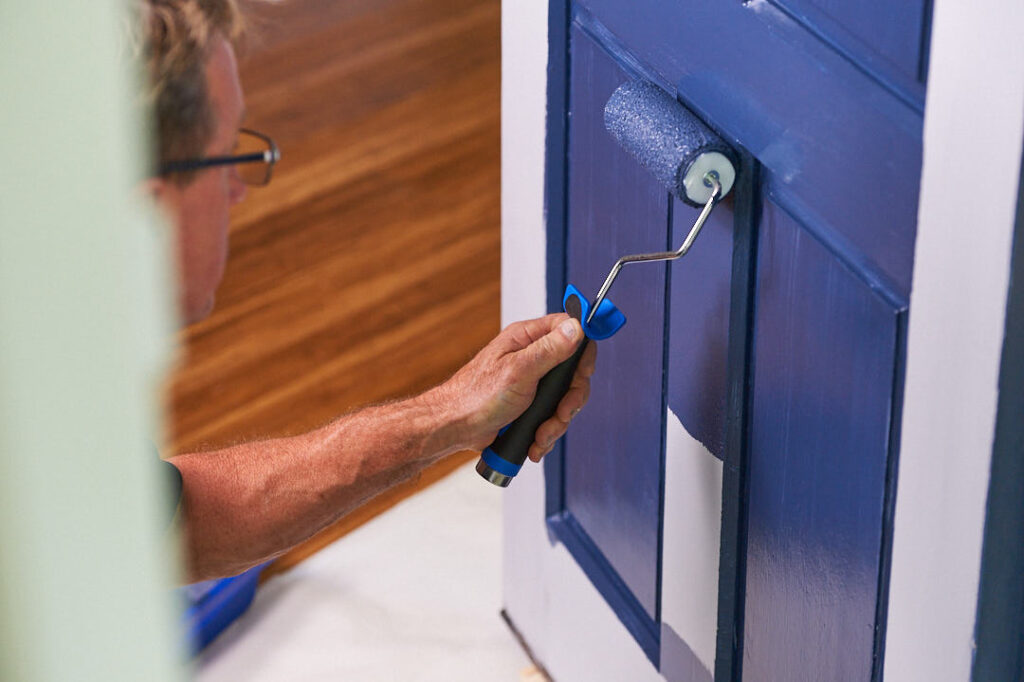
Step 7: Apply second coat
Once your first coat is completely dry, apply your second coat. Depending on the type of paint you are using, this can take up to 24 hours. Waiting until the paint is completely dry ensures that your second coat won’t pull up your first coat and create bubbles over your paint surface.
Repeat every step of the first coat in the same order to ensure an all-over even coat. With an intricate door, it’s easy to miss spots on the first coat.
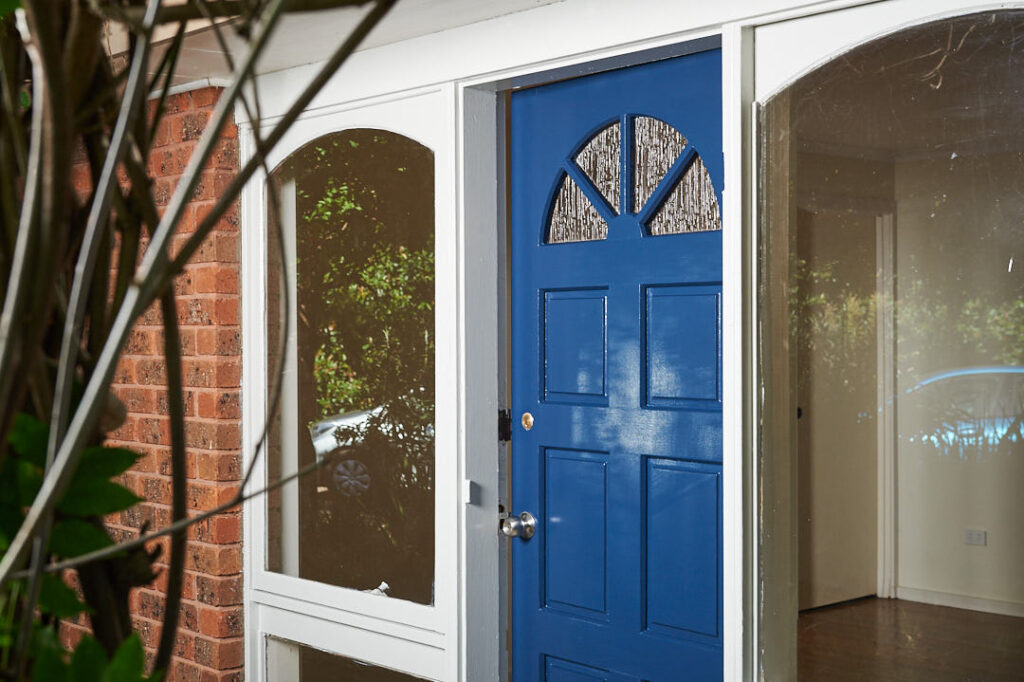
Step 8: Finishing up
Congratulations, you’re done! If you have any taped areas, gently pull up the tape while your second coat is still tacky. Pour or scrape any leftover paint back into the tin for re-use. Wash your brushes and rollers thoroughly so you can use them for your next project. You can store them in their brush holder or roller sleeve packaging in between projects.
Have you enjoyed learning how to paint your front door? Explore more DIY painting projects and tips from Monarch.

